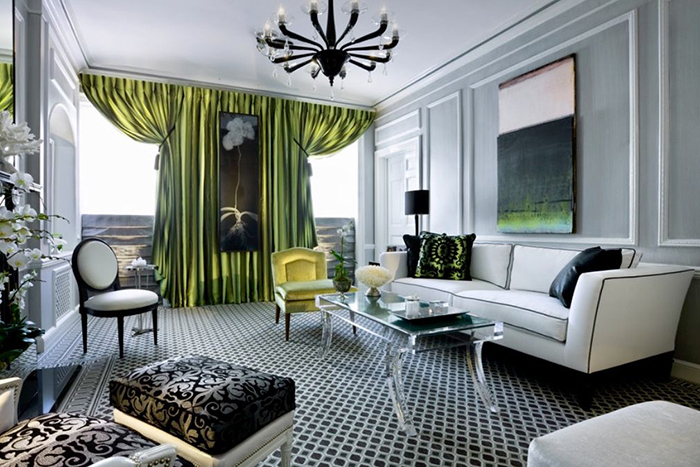While art deco has its origins from early in the last century, it is still being used today.
By Diane Franklin
Art Deco was a major trend in the 1920s and 1930s as the design world began favoring a more sophisticated and cosmopolitan type of design. Now, a hundred years after its first major splash on the interior design scene, this distinct style is still with us. However, the interpretation of Art Deco has changed over the years, with the current usage of the style in 21st-century homes representing an amalgamation of its roots and a distinctively modern decorating sensibility.
Origins of Art Deco
Art Deco was all the rage, both in the United States and in Europe, from the mid-1920s until the start of World War II. Featuring sleek lines, symmetrical stepped design and stylized geometrics, Art Deco emerged as a prominent architectural style that made an indelible impression in the skyline of New York that lasts until this day.
The Chrysler Building and Rockefeller Center are among two of the most well-known examples. But this cosmopolitan style was not confined to New York City. It was showcased everywhere from the luxury hotels of Miami Beach to the opulent theaters of Los Angeles—and again, many of these buildings are still standing today as testaments to the enduring appeal of the Art Deco style.
The popularity of the Art Deco style translated into popularity as an interior design trend. Elegant homes featured the symmetrical design and bold geometrics for which Art Deco was known. Art Deco favored bold colors, such as bright reds, vibrant yellows and deep blues, often with contrasting hues used together. The elegance of Art Deco also brought about sophisticated use of silvers, golds, chrome and black.
Art Deco in the Modern Era
Art Deco ebbed in the 1940s and ’50s, making way for the less flashy Mid-Century Modern trend. The Art Deco trend had a revival in the 1980s, but then subsided again for another couple of decades. Now many design experts agree that it is making a comeback.
In conjunction with this comeback, consumers are finding more prevalence of Art Deco designs in wall coverings, area rugs, upholstery, lighting fixtures, floor covering tiles and furniture. In furniture, for example, you’ll see a greater selection of furniture with sharp edges and symmetrical detailing. You’ll also see the use of more luxurious materials, such as metallics and polished woods.
Bold, contrasting colors continue to play an important role in Art Deco. However, for those who want a less risky way to achieve the Art Deco look, the style also favors the contrasting use of black and white as well as the use of neutrals like creams, grays and beiges paired with chrome, glass and stainless steel.
The look of Art Deco remains as cosmopolitan as when it was originally introduced. You won’t see the use of florals or textured finishes. Instead the looks will be sleek, sophisticated, streamlined and clean.
Ways to Use Art Deco
Here are some suggestions for using Art Deco in your decorating scheme.
- Pick your favorite Art Deco color scheme. Think deep, bold, rich color schemes with high contrast, such as orange and green, blue and yellow, black and white, or black and gold.
- Choose an Art Deco wallpaper. Large-scale wallpaper featuring a symmetrical geometric pattern, such as scallops, hexagons, zigzags or repeating fan shapes is an excellent way to bring the Art Deco look into a room. If you don’t want to go with an all-over pattern, consider wall decals with appropriately styled geometrics. There are even wall decals of the New York skyline—appropriate since many of the iconic shapes represent the original use of Art Deco in America.
- Use angular furnishings. Armchairs, coffee tables and foyer tables are some accent pieces you can easily add to your décor to create more of an Art Deco ambiance.
- Use animal prints. While florals and textures are atypical of Art Deco style, adding an animal print area rug or bedspread is consistent with the trend.
- Use reflective surfaces. Mirrors, glass, chrome and stainless steel are an excellent way to incorporate the trend.
- Accessorize accordingly. Choose lamps, tabletop accessories, wall art and light fixtures in the Art Deco style. Look for opulent, large-scale pieces—and remember the concepts of clean lines, stepped design and stylized geometrics when making your selections.

 Interior Paints
Interior Paints Exterior Paints
Exterior Paints Primers
Primers Stains & Clears
Stains & Clears
 Paint Brushes
Paint Brushes Paint Roller
Paint Roller Paint Trays & Liners
Paint Trays & Liners
